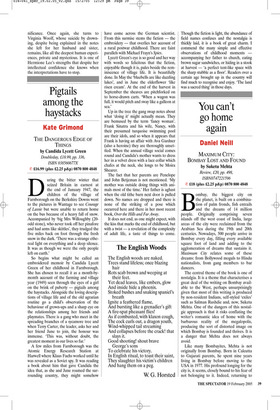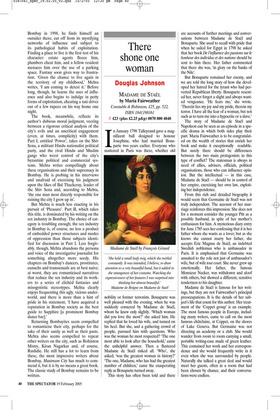You can’t go home again
Daniel Neill
MAXIMUM CITY: BOMBAY LOST AND FOUND by Suketu Mehta Review, £20, pp. 498, ISBN0747221596 ✆ £18 (plus £2.25 p&p) 0870 800 4848 Bombay, the biggest city on the planet, is built on a combination of palm fronds, fish entrails and the dreams of 14 million people. Originally comprising seven islands off the west coast of India, large areas of the city were reclaimed from the Arabian Sea during the 19th and 20th centuries. Nowadays, 500 people arrive in Bombay every day, filling every available square foot of land and adding to the agglomeration of dreams that sustains it. Maximum City relates some of these dreams: from Bollywood moguls to Hindu nationalists, from gang members to bar dancers.
The central theme of the book is one of nostalgia. It is a theme that characterises a great deal of the writing on Bombay available to the West, perhaps unsurprisingly given that most of this writing is produced by non-resident Indians, self-styled ‘exiles’ such as Salman Rushdie and, now, Suketu Mehta. One of the dangers of this nostalgic approach is that it risks conflating the writer’s romantic idea of home with the barbarous reality of the megalopolis, producing the sort of distorted image on which Bombay is founded and thrives. It is a danger that Mehta does not always avoid.
Like many Bombayites, Mehta is not originally from Bombay. Born in Calcutta to Gujarati parents, he spent nine years living in Bombay before moving to the USA in 1977. His profound longing for the city is, it seems, closely bound to his fear of not belonging to it. Indeed, returning to Bombay in 1998, he finds himself an outsider there, cut off from its mystifying networks of influence and subject to its pathological habits of exploitation. Finding a place to live is the first test of his character: estate agents fleece him, plumbers cheat him, and a fellow resident menaces him over the use of a parking space. Fantasy soon gives way to frustration. ‘Given the chance to live again in the territory of my childhood,’ Mehta writes, ‘I am coming to detest it.’ Before long, though, he learns the uses of influence and also begins to indulge in petty forms of exploitation, cheating a taxi driver out of a few rupees on his way home one night.
The book, meanwhile, reflects its author’s dubious moral judgment, veering between a rigorous critical analysis of the city’s evils and an uncritical engagement (even, at times, complicity) with them. Part I, entitled ‘Power’, takes on the Shiv Sena, a militant Hindu nationalist political party, and the rival Hindu and Muslim gangs who wrest control of the city’s byzantine political and commercial systems. Mehta writes compellingly about these organisations and their supremacy in Bombay. He is probing in his interviews and unafraid of exercising his judgment upon the likes of Bal Thackeray, leader of the Shiv Sena and, according to Mehta, ‘the one man most directly responsible for ruining the city I grew up in’.
But Mehta is much less exacting in his pursuit of ‘Pleasure’. Part II, which takes this title, is dominated by his writing on the sex industry in Bombay. The choice of category is troubling enough; the sex industry in Bombay is, of course, no less a product of embedded power structures and modes of oppression than those subjects identified for discussion in Part I. Less forgivably, though, Mehta abandons the persona and voice of the investigative journalist for something altogether more seedy. His chapters on Bombay’s dancers, prostitutes, eunuchs and transsexuals are at best naive; at worst, they are romanticised narratives that reduce the sex industry and its workers to a series of clichéd fantasies and misogynistic stereotypes. Mehta clearly enjoys frequenting this ugly, vicious underworld, and there is more than a hint of pride in his statement, ‘I have acquired a reputation in Bombay society as the best guide to Sapphire [a prominent Bombay dance bar].’ Returning Bombayites seem compelled to romanticise their city, perhaps for the sake of their sanity as well as their pasts. Mehta also seems compelled to repeat other writers on the city, such as Rohinton Mistry, Kiran Nagarkar and, of course, Rushdie. He still has a lot to learn from these, the most impressive writers about Bombay. Maximum City has much to commend it, but it is by no means a great book. The classic study of Bombay remains to be written.


















































 Previous page
Previous page